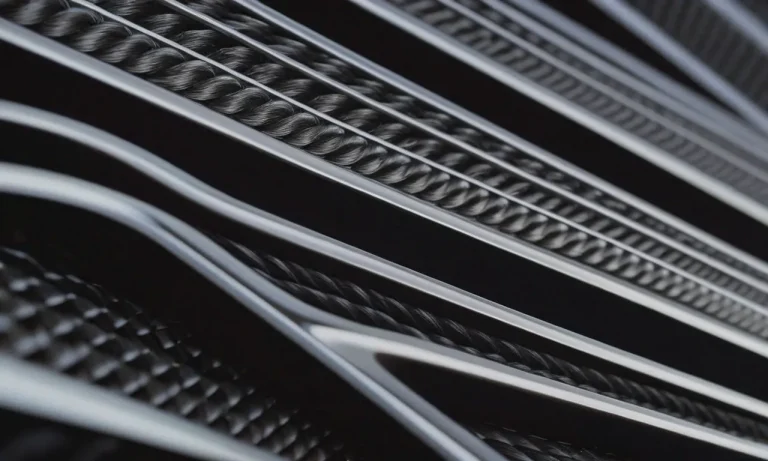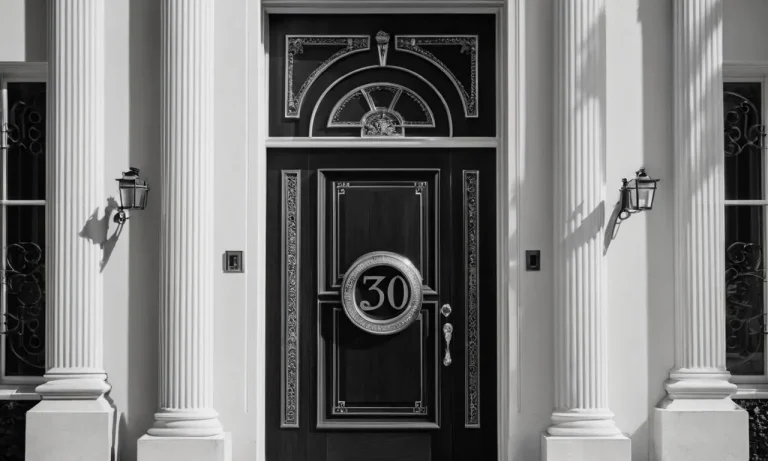Can Wicker Furniture Get Wet? A Detailed Look
Wicker furniture is known for its timeless beauty and natural allure. However, its delicate woven construction often leads homeowners to wonder: can wicker furniture get wet safely? If you’ve invested in these stylish outdoor furniture pieces, you likely want to know how to protect them from the elements.
The short answer is: yes, wicker can get wet, but you need to take precautions. Read on as we explore wicker construction, how moisture affects it, proper care and maintenance, and tips to minimize water damage.
The Construction of Wicker Furniture
Wicker furniture is a popular choice for both indoor and outdoor settings due to its natural and rustic charm. Understanding the construction of wicker furniture can help you better appreciate its durability and aesthetic appeal.
What is Wicker Material?
Wicker refers to the weaving technique rather than the material itself. It can be made from a variety of materials, including natural fibers like rattan, bamboo, or willow, as well as synthetic materials like resin or plastic.
These materials are chosen for their flexibility and strength, making them ideal for the intricate weaving patterns that characterize wicker furniture.
When selecting wicker furniture, it is important to consider the material used. Natural wicker materials like rattan or bamboo are environmentally friendly and biodegradable, making them a sustainable choice.
On the other hand, synthetic wicker materials are often more durable, resistant to weather conditions, and require less maintenance.
How Wicker Is Woven
Wicker furniture is typically handcrafted by skilled artisans who weave the materials together to create intricate patterns. The weaving process involves intertwining the fibers, whether natural or synthetic, to form a sturdy and visually appealing structure.
There are different weaving techniques used in wicker furniture, including the popular “over-under” pattern. This technique involves weaving one strand over the other and then under the next, creating a tight and secure weave.
Other techniques include the “herringbone” pattern, where the strands are woven diagonally, and the “checkerboard” pattern, which creates a unique square design.
The Pros and Cons of Natural Wicker
Natural wicker materials like rattan have their own set of advantages and disadvantages. On the positive side, natural wicker furniture is lightweight, making it easy to move around. It also has a unique texture and appearance, adding a touch of warmth and character to any space.
However, natural wicker furniture is more susceptible to damage from moisture and prolonged exposure to sunlight. It can fade, warp, or even become brittle over time if not properly cared for. To protect natural wicker furniture, it is recommended to keep it in shaded areas or use protective covers when not in use.
It is worth noting that synthetic wicker materials, like resin or plastic, are often designed to be more weather-resistant and require less maintenance compared to natural wicker. These materials are an excellent alternative for those looking for long-lasting outdoor furniture.
For more information on wicker furniture construction and maintenance tips, you can visit Wicker Paradise’s blog, a reputable source for all things wicker-related.
How Moisture Affects Wicker
Wicker furniture is a popular choice for both indoor and outdoor settings due to its natural charm and durability. However, it is important to understand how moisture can impact wicker to ensure its longevity and prevent damage.
Wicker’s Vulnerability to Water
While wicker is often treated with protective coatings, it is still susceptible to moisture damage. The natural materials used in wicker, such as rattan or bamboo, can absorb water if exposed to excessive humidity or rain.
This absorption can cause the wicker to expand, weaken, and even warp over time.
According to experts at The Spruce, wicker furniture should be kept in a dry environment to prevent any potential water damage. This means avoiding placing wicker pieces directly under rain or exposing them to high humidity areas, such as bathrooms or basements.
Additionally, it is recommended to use protective covers or store wicker furniture indoors during wet seasons to further safeguard it from moisture.
Effects of Excess Moisture
Exposure to excess moisture can have various negative effects on wicker furniture. One of the most common issues is the development of mold and mildew.
Mold and mildew thrive in damp environments, and wicker furniture that has been exposed to moisture becomes a perfect breeding ground for these unwanted growths. The presence of mold and mildew not only compromises the aesthetic appeal of the furniture, but it can also pose health risks for individuals with allergies or respiratory conditions.
Furthermore, excess moisture can lead to the deterioration of the wicker material itself. It can weaken the fibers, making them more prone to breaking or unraveling. This can significantly shorten the lifespan of the furniture and diminish its overall quality and structural integrity.
Can Mildew and Mold Develop?
Yes, mildew and mold can develop on wicker furniture if it is exposed to excessive moisture and not properly cared for. However, there are preventive measures and cleaning techniques that can help mitigate the risk.
Regularly inspecting and cleaning wicker furniture is essential to prevent the growth of mold and mildew. Using a mixture of mild soap and warm water, gently scrub the affected areas and allow them to dry completely. Additionally, keeping wicker furniture in a well-ventilated area and using dehumidifiers can help control moisture levels and discourage the growth of these unwanted guests.
By understanding the vulnerability of wicker to moisture and taking appropriate precautions, you can ensure that your wicker furniture remains in great condition for years to come.
Caring for Wicker Properly
Wicker furniture is a popular choice for outdoor and indoor spaces due to its durability and timeless appeal. However, to ensure its longevity and maintain its beauty, proper care is essential. Here are some tips to help you care for your wicker furniture:
Regular Cleaning and Maintenance
Regular cleaning is crucial in keeping your wicker furniture in top condition. Start by removing any loose dirt or debris using a soft brush or vacuum cleaner with a brush attachment. Next, mix a mild detergent with warm water and gently scrub the wicker surfaces with a soft cloth or sponge.
Rinse thoroughly with clean water and allow the furniture to dry completely before using it again. Avoid using harsh chemicals or abrasive cleaners that can damage the wicker material.
Additionally, it’s important to inspect your wicker furniture regularly for any signs of wear or damage. If you notice any loose strands or broken pieces, address them promptly to prevent further deterioration.
You can repair minor damages by applying a small amount of wood glue or epoxy adhesive, following the manufacturer’s instructions.
Using Protective Covers
To shield your wicker furniture from the elements, it’s a good idea to use protective covers when it’s not in use. These covers are typically made from waterproof materials that help prevent moisture from seeping into the wicker. Additionally, they provide protection against dust, dirt, and UV rays.
Make sure to choose covers that are specifically designed for wicker furniture and fit properly to ensure maximum coverage and protection.
It’s important to note that while protective covers can help prolong the life of your wicker furniture, they are not a foolproof solution. Extreme weather conditions, such as heavy rain or snow, can still cause moisture to penetrate the covers.
Therefore, it’s advisable to store your wicker furniture indoors during inclement weather or invest in a waterproof storage solution.
Storing Wicker Furniture Indoors
When the outdoor season comes to an end or during extended periods of non-use, it’s highly recommended to store your wicker furniture indoors. This provides the best protection against moisture, sunlight, and other potential causes of damage.
Find a cool, dry area in your home, such as a basement or garage, where you can store the furniture. Before storing, ensure that the furniture is clean and dry to prevent the growth of mold or mildew.
When storing wicker furniture, it’s essential to keep it elevated off the ground to avoid any contact with damp surfaces. You can use wooden blocks or place the furniture on a raised platform. Additionally, covering the furniture with a breathable fabric or old bedsheet can further protect it from dust and debris.
By following these care tips, you can enjoy your wicker furniture for years to come. Remember, proper maintenance and protection are key to keeping your wicker furniture looking great and withstanding the test of time.
Minimizing Water Damage
When it comes to wicker furniture, it is important to take certain precautions to minimize water damage. Here are some tips to help you keep your wicker furniture in great shape:
Avoid Putting Wicker In Direct Rain
Wicker furniture is not designed to withstand heavy rainfall or constant exposure to moisture. If you plan on using your wicker furniture outdoors, it is important to protect it from direct rain. Consider placing it under a covered patio or using a waterproof cover to shield it from the elements.
This will help prevent water from seeping into the wicker, which can lead to warping, mold, and other forms of damage.
Dry Thoroughly After Exposure
If your wicker furniture does get wet, it is crucial to dry it thoroughly as soon as possible. Use a soft cloth or towel to gently wipe away any excess moisture. Ensure that all the nooks and crannies are dried properly, as trapped moisture can lead to the growth of mold and mildew.
Additionally, allowing wet wicker furniture to sit for extended periods can cause the material to weaken and lose its structural integrity.
Repair Damage Quickly
If you notice any signs of water damage, such as cracked or split wicker strands, it is important to address the issue promptly. Ignoring the damage can lead to further deterioration and potentially ruin the piece of furniture.
Consider seeking professional help or using a wicker repair kit to fix any damaged areas. By taking quick action, you can extend the lifespan of your wicker furniture and keep it looking as good as new.
Conclusion
While wicker can withstand some moisture, prolonged wetness can lead to irreparable damage. By understanding wicker’s vulnerabilities, providing routine care, and taking steps to shield it from excess water, you can safely enjoy elegant wicker furniture for years to come.







